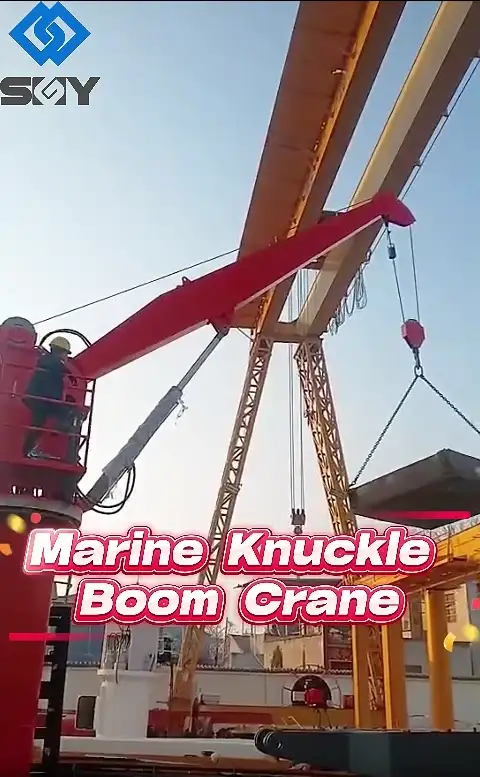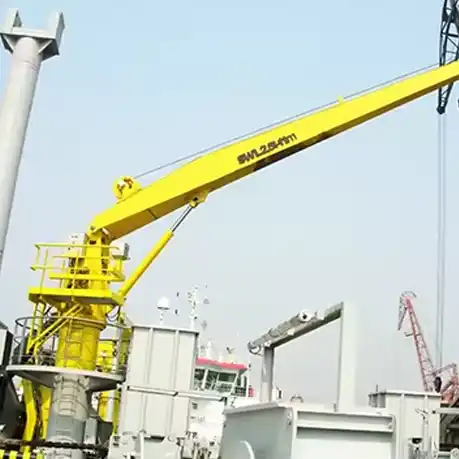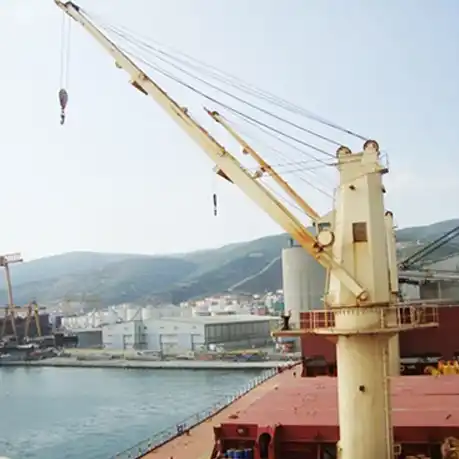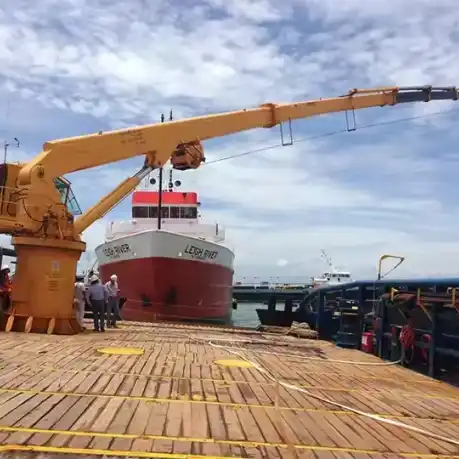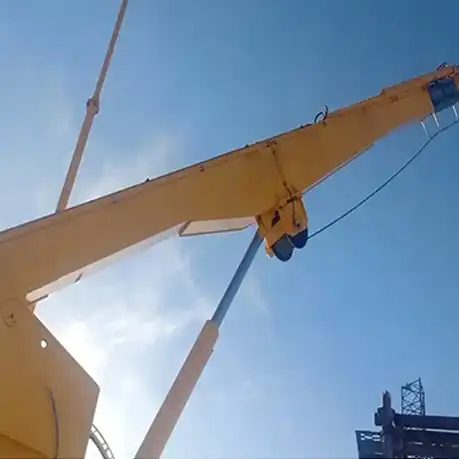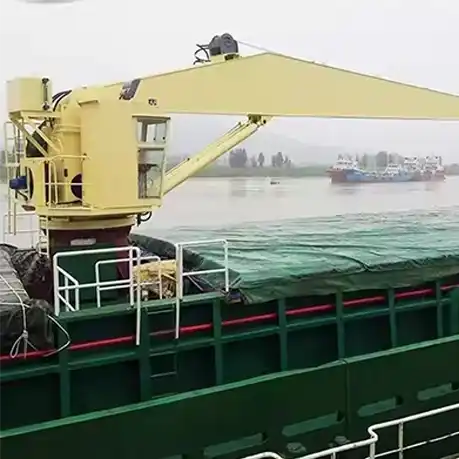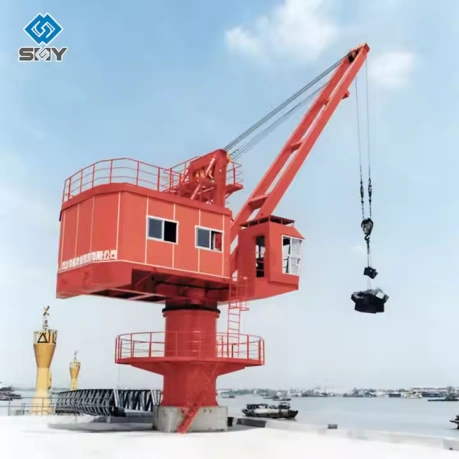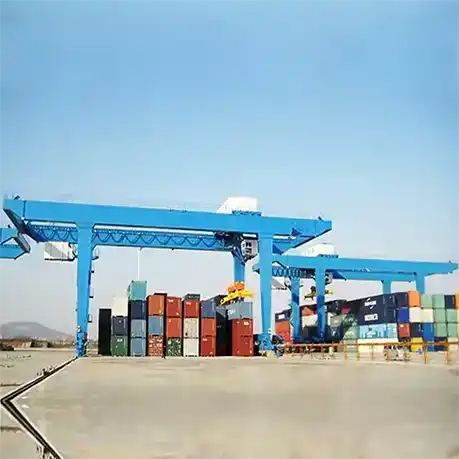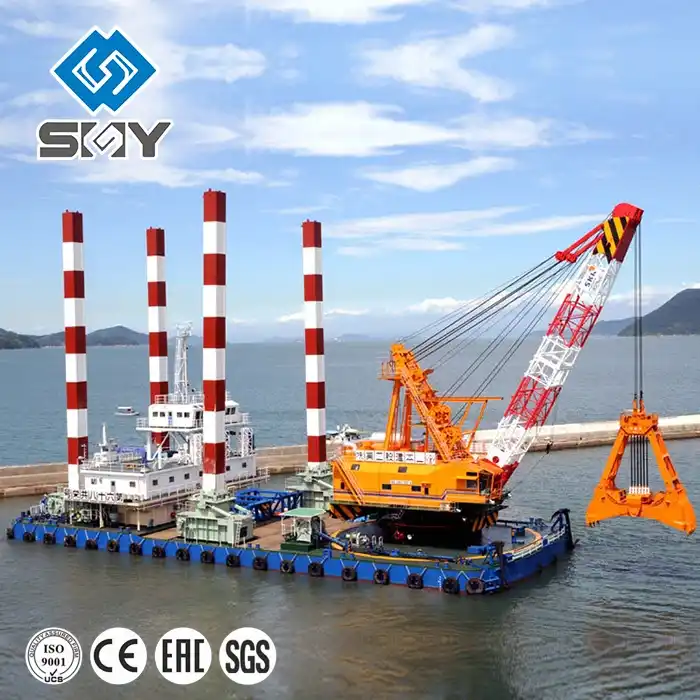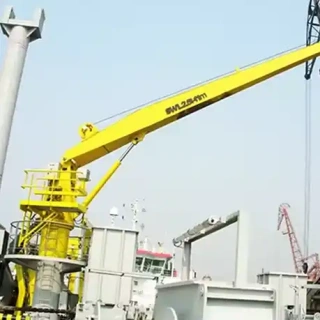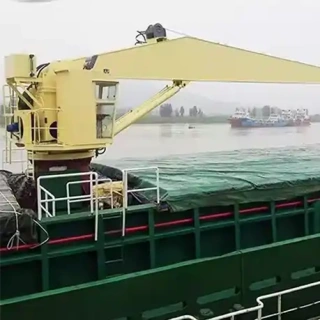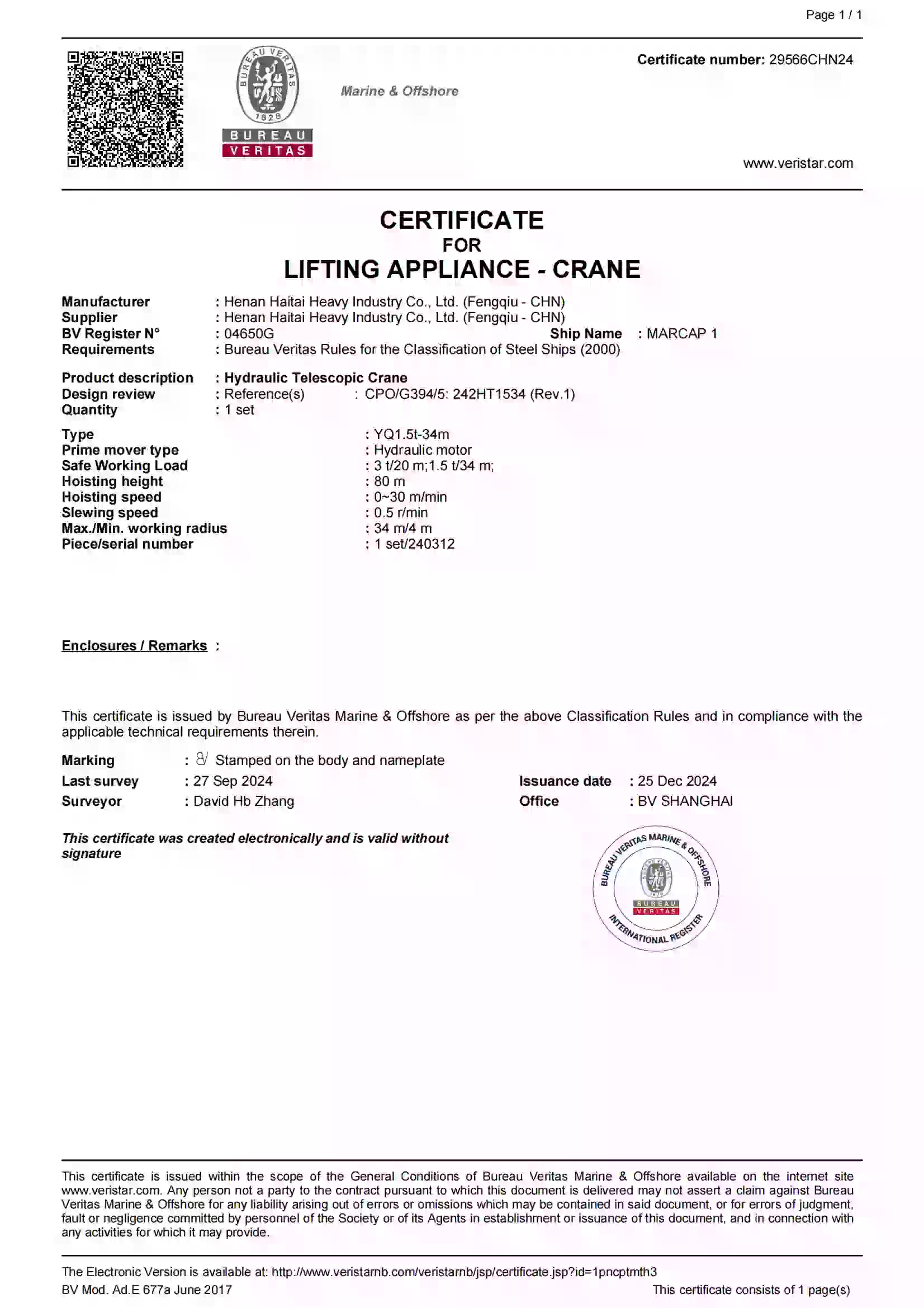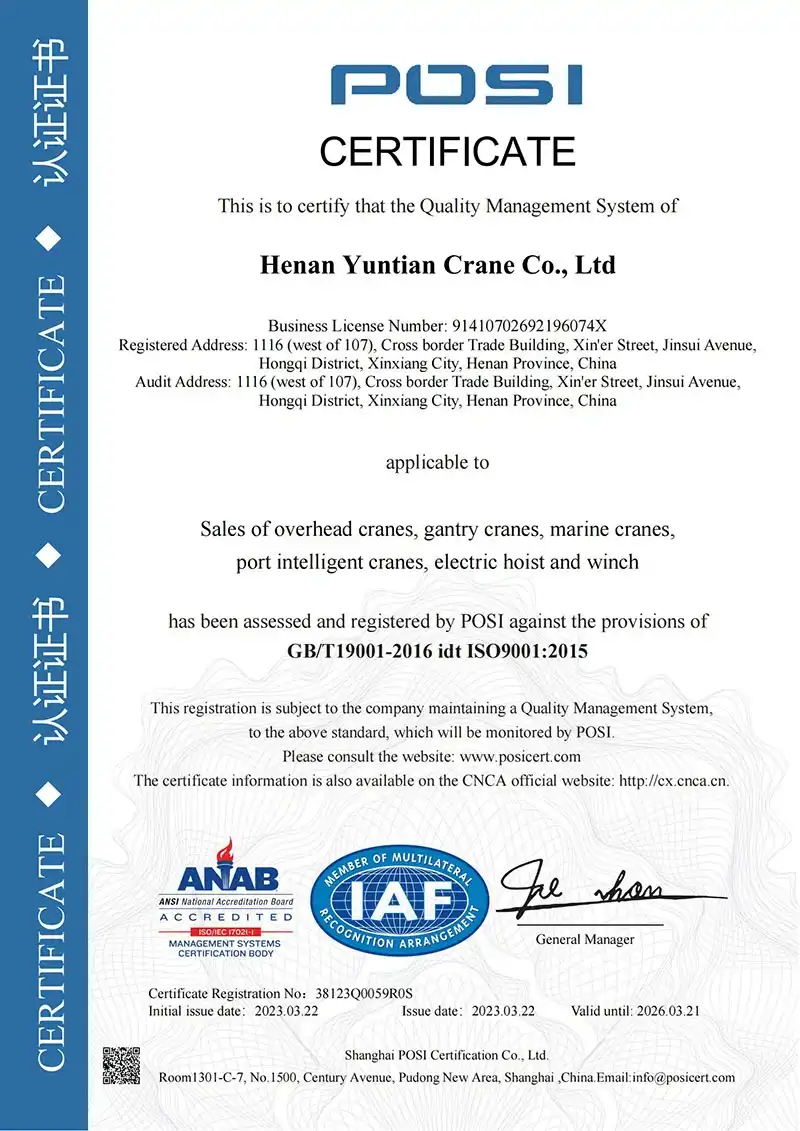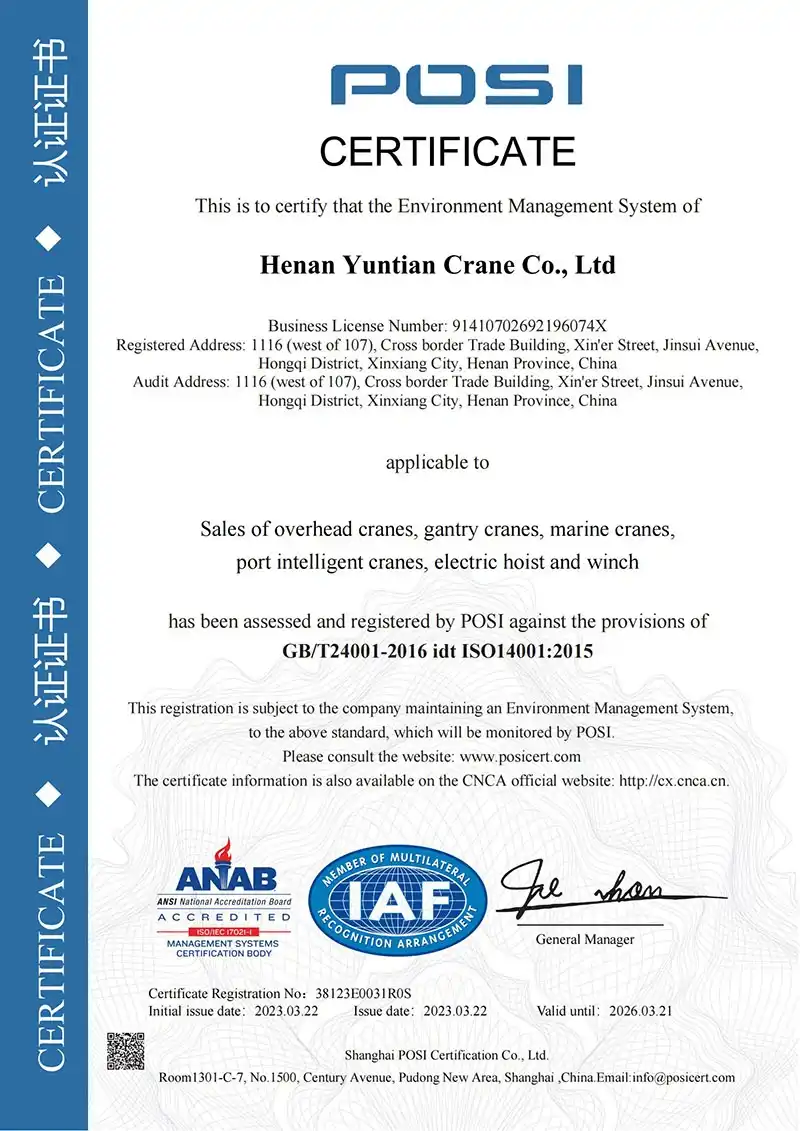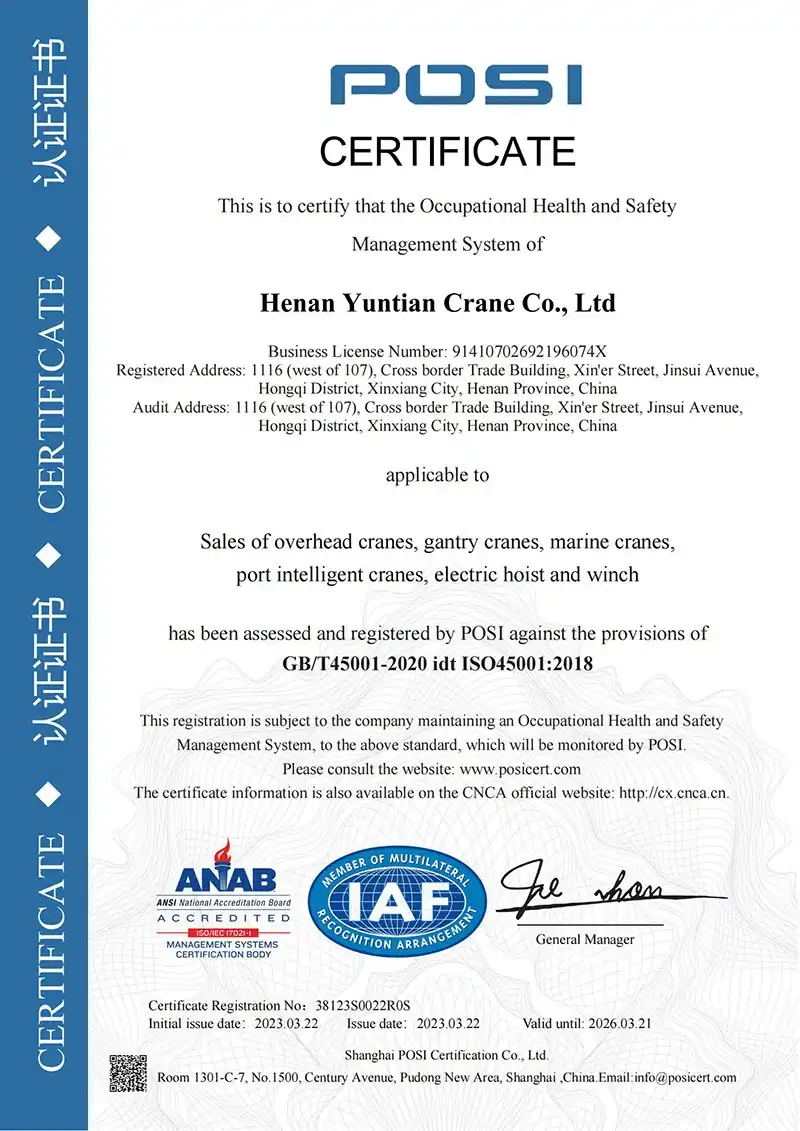





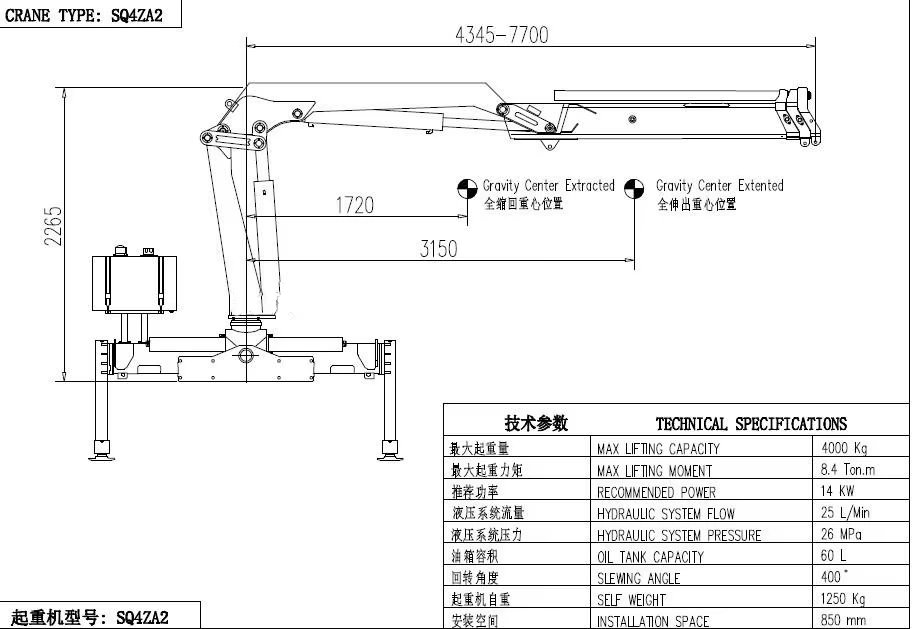
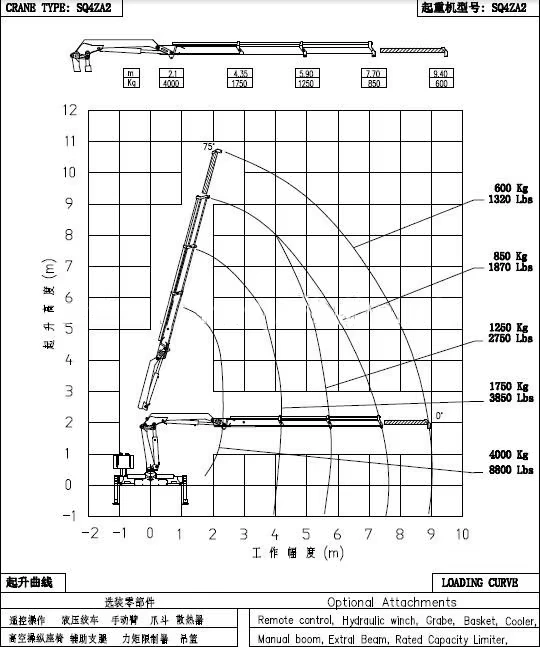
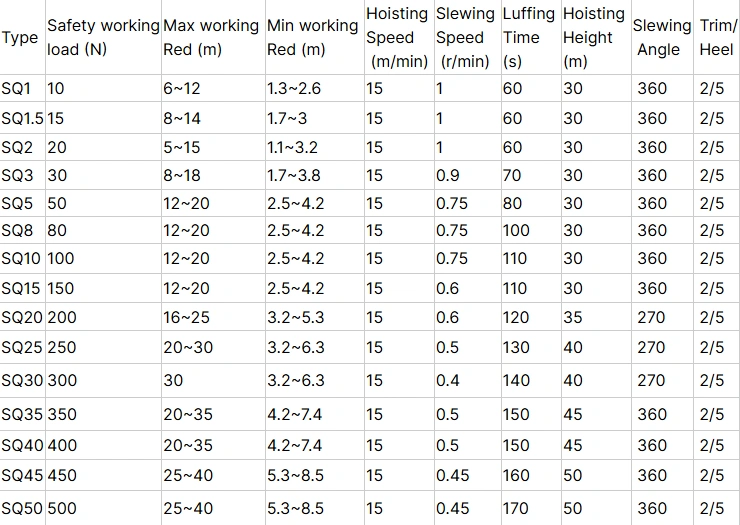
Key Advantages of Marine Stiff Boom Cranes
-
Strong & Compact Design
Made to save space on ships while keeping high load capacity (2–10 tonnes standard, can be customized for heavier loads).
Perfect for tight decks and offshore setups. -
Better Stability & Accuracy
The stiff boom reduces sway, allowing safe and controlled lifting even in rough seas.
Smooth and continuous speed control helps place cargo, equipment, or people precisely. Made for Tough Sea Conditions
Special anti-rust coatings:
Epoxy base (40–50µm) + enamel layer + polyurethane top coat (60–80µm).
-
Chrome-plated jack rods (100µ) and nickel-plated parts for longer life.
Arctic versions available for very cold weather.
Flexible Operation & Control
Full 360° rotation for easy movement.
Can perform multiple motions at once (at slower speeds).
Different control choices:
Operator platform above slewing ring.
-
Optional wireless remote for safer, hands-free use.
-
Low Maintenance & High Trustworthiness
Self-powered electro-hydraulic system reduces outside support needs.
Easy-to-reach parts make repairs simpler in remote areas.
Emergency load-lowering system for safer operations.
Standout Features
Standard Features
✔ Built-in electro-hydraulic power pack
✔ 360° continuous rotation
✔ Smooth speed control for accuracy
✔ Emergency load lowering function
Optional Upgrades
Star-delta starter – Lowers power spike during start.
Limit switches – Automatic stop for hoisting and slewing safety.
External power pack – For longer use.
Arctic kits – For work below –40°C.
Enclosed operator cabin – Protection from weather.
Load monitoring system – Live weight reading.
Personnel handling – Approved for moving crew.
Project Case 1: ABS-Certified 1.5T12M Marine Crane
Under the survey of an ABS surveyor, the 1.5T12M marine crane passed all tests successfully and received high praise. The client from Mexico first worked with us in 2021, purchasing a CCS-certified 1.5T10M crane. Because of good performance and satisfaction with product quality and service, the client decided to order another crane—this time a 1.5T12M model.
Yuntian has strong experience in making ABS-certified cranes. So far, we have provided over 50 marine cranes to customers in the Middle East, Southeast Asia, and South America, including ABS-approved cranes. As this was the second order, the client trusted our manufacturing ability.
During production, the client suddenly requested explosion-proofing for the whole crane since it will be used on an oil tanker. Normally, explosion-proof requirements mainly affect electrical parts. If the control cabinet is placed in a safe zone, only the electrical components on the boom need explosion-proofing, which saves cost. However, on this vessel, the safe area was too far from the crane’s installation spot, so the control cabinet also had to be explosion-proof. After several discussions with ABS, we agreed on a workable solution that met the client’s needs.
Currently, the crane has passed ABS reviews including design drawings, material quality, welding details, and NDT testing. It is now in further production stages.
What Tests Are Required for ABS Certification?
Design (production drawings, structural drawings, calculations, etc.)
Raw materials (steel plates and parts)
Welding quality check
NDT (Non-Destructive Testing)
Simulated sea condition tests, no-load test, load test, static test, overload test, overload protection test, etc.
Extra Knowledge: Hazardous Area Classification on Oil Tankers
Hazardous areas are classified based on how often explosive gas is present. This classification follows IEC-60092-502 for tankers carrying flammable liquids with flashpoints ≤60°C. Areas are divided into Zone 0, Zone 1, and Zone 2—Zone 0 is the most dangerous, Zone 2 the least.
Zone 0: Explosive gas is present always or for long periods (over 1000 hours per year). Examples: cargo tanks, sludge tanks, vent systems connected to cargo areas, inside spaces of pipes or equipment containing flammable gas/vapor.
Zone 1: Explosive gas may occur during normal operation (10–1000 hours per year). Examples: enclosed spaces next to cargo tanks, hose storage rooms, areas with cargo pipelines, hatch openings, gas outlets, valve flanges, etc.
Zone 2: Explosive gas is rare and short-lived (0.1–10 hours per year). This can be understood as an extension of Zone 1, such as entrances/exits of Zone 1 areas, ventilation openings, or the open deck near Zone 1.
Electrical equipment used in hazardous areas must match the zone’s danger level. Equipment is also grouped (T1 to T6) based on surface temperature. Higher T-groups (e.g., T6) can replace lower ones (e.g., T1), but not the other way around.
For Zone 1 and Zone 2, acceptable explosion-proof types include: flameproof (d), increased safety (e), intrinsic safety (i), and oil-immersed (o) equipment.
Project Case 2: Custom 2.6T9.6M Cranes for Fishing Port Use
A port service company in Pakistan working in fishing and port services ordered three cranes mainly for pulling fishing nets ashore. Based on actual port conditions, we customized three 2.6-ton 9.6-meter cranes.
The client required the crane strength to be twice the normal standard. Usually, equipment with 1.25x strength is enough. Also, since the crane base is fixed into the port concrete, it must not tip over even under 2x overturning force.
To meet these tough requirements, we improved the design, selected stronger materials, and used better production methods. We used high-strength steel for key parts, strict quality control, and full testing.
The simple design of the stiff boom crane makes it easy to use, learn, and maintain, saving time and cost. For corrosion resistance, we used marine-grade paint to withstand harsh port conditions and extend service life. An independent emergency stop function was added for quick braking, ensuring safer operation.
This crane comes with a special base. It allows easy and fixed installation on any type of vessel. The central controls and distributor are separate from the structure.
Why Choose Our Marine Stiff Boom Cranes?
Used in Important Operations: Offshore rigs, shipyards, ports, and research vessels.
Customizable: Pedestal heights, outreach (up to 20m+), and capacity available on request.
Meets Global Standards: Designed to follow international marine safety rules.
Best Used For:
Offshore oil/gas platforms – lifting pipes, tools, and supplies.
Commercial shipping – loading and unloading cargo.
Wind turbine maintenance – installing heavy parts.
Naval operations – moving equipment on military ships.
In marine equipment, crane performance and safety affect operation efficiency and worker safety. It is very important to choose a reliable manufacturer.
Yuntian is a professional manufacturer based in mainland China. We focus on designing and building marine cranes. We have strict quality control and innovative technology. Our cranes have received certifications from major international classification societies. These include CCS (China), BV (France), and RS (Russia).
These certifications show our high level of quality and safety. They also mean our cranes can be used worldwide. This gives our customers trust for global operations.
We offer a full range of crane types for different vessels and situations:
Stiff boom cranes: wide operation range, high flexibility.
Telescopic cranes: adjustable arm length, good for tight spaces.
Knuckle boom cranes: compact size, ideal for small decks.
These cranes suit fishing boats, cargo ships, engineering ships, and more. Customers do not need to worry about finding the right equipment.
We know different customers have different needs. We offer full custom service. Key parameters like lifting weight, boom length, lifting height, and speed can be customized. This service meets specific operational needs.
Whether for large ocean cargo ships or fast nearshore engineering vessels, we provide tailor-made solutions. Our goal is to let the equipment fit the need—not the other way around. This helps customers work more efficiently and save cost.
Main Applications of Marine Stiff Boom Cranes
Cargo Handling
Installed on ships to load and unload containers, bulk goods, and heavy equipment. Especially useful in areas without port facilities. Improves efficiency and works well even when the ship is moving.-
Shipbuilding and Repair
Used in shipyards or at sea to lift large parts like hull sections, engines, or propellers. Supports building, repair, and part replacement. Ensures safe and accurate operation. Offshore Platform Work
Used on oil or wind power platforms to install equipment, perform maintenance, and move supplies. Handles tasks like lifting platform modules or inspection devices. Meets high stability needs for offshore work.-
Research and Rescue Missions
On research vessels: launches and recovers submersibles or seabed exploration gear.
In rescue operations: lifts lifeboats or supplies. Helps improve rescue efficiency. Military Use
On navy ships: used for installing, maintaining, and supplying weapon systems, radars, and other equipment. Supports military mission success.
These applications show that marine stiff boom cranes can adapt to different ocean environments. They are designed to be safe, stable, and easy to operate—suitable for various marine tasks.


